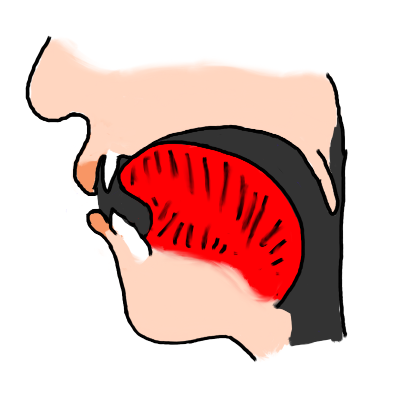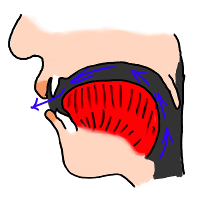How to pronounce fauteuil
Do you find the information below useful? If you do, you can get guides like it for 1,000+ French words by downloading this app for your iPhone or iPad.
| l |  | The French 'l' is similar to the 'l' in English "with Lee". The tongue tip usually touches the back of the upper teeth. It is also a so-called "clear" l: in other words, you don't raise the back of your tongue as you pronounce the French 'l', as occurs in some cases in English. | |
| ə |  | The 'schwa' or 'neutral e' is pronounced with the tongue in a "central, relaxed" position and the mouth also in a 'half open, relaxed' position. Note that many French speakers actually tend to pronounce this vowel as a 'close eu' vowel (as occurs at the end of words ending in -euse), or at least with some rounding of the lips. | |
| f |  | The French 'f' sound is pronounced in a similar way to English 'f'. | |
| o |  | The French 'close o' vowel is pronounced with the tongue far back in the mouth and with the back of the tongue raised up towards the soft palate (towards the back of the roof of the mouth). Holds the lips in a rounded, bunched position as you pronounce the vowel and avoid pronouncing it as a "glide" or diphthong. | |
| t |  | The French 't' is pronounced like an English 't' after a 'th' sound (as in "with two"). Your tongue touches the back of the teeth. Also try to avoid a "strong burst of air" (aspiration) as in English. If you are a native English speaker, repeat the word "tool" then "stool" with your hand in front of your mouth. In "tool", you'll feel a stronger burst of air than in "stool". In French, pronounce the 't' as in English "stool", without the strong burst of air. | |
| œ |  | To pronounce the French 'open eu' vowel, imagine the body of the tongue slightly "forward of and below center", with the mouth roughly half open and the lips rounded. | |
| j |  | This is a sound a little like an English "y" as in "yes". To pronounce it, you "glide" rapidly between a French 'i' vowel and the following vowel. (And on the end of a word, you pronounce it by going rapidly from the previous vowel to a French 'i' vowel.) Note the phonetic symbol [j] doesn't mean the sound at the start of "je" or "jean". |